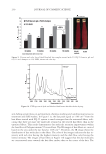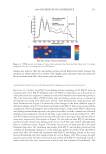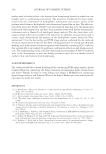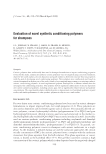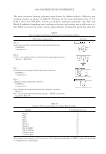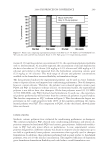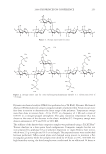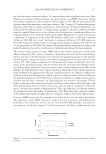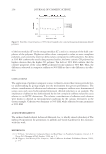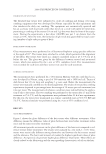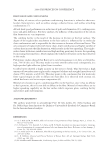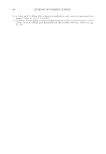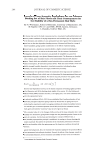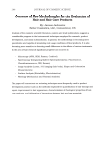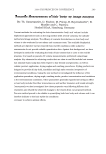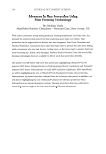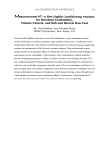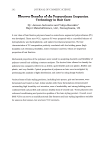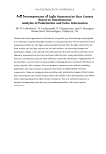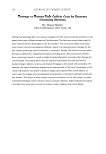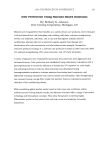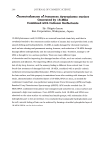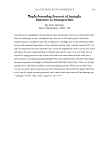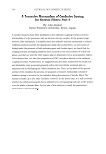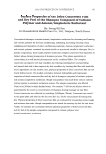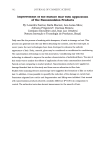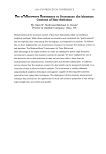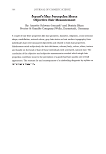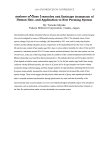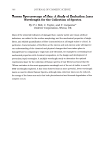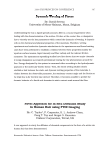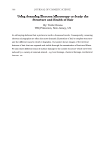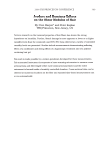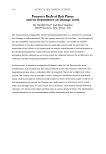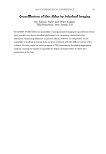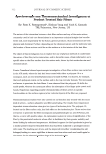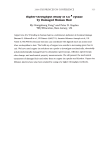2008 TRI/PRINCETON CONFERENCE 275 FORMATION OF SPLIT ENDS The bleached hair tresses were submitted to cycles of combing and drying (1 h) using combing equipment that was developed by Natura especially for this experiment and that simulates the daily care combing. The equipment was automatically operated and has an accessory with four fi xed combs that moves in a circle with speed 40 times/min, permitting a combing of the tresses (18 cm and 5 g) that were fi xed in front of the equip- ment. During the experiments, a hair dryer (1800W) was put 5 cm distant from the tresses at 70°C. After the time, the formation of split ends was quantifi ed by visual count- ing (number of split ends per gram of hair). EVALUATION OF THE GLOSS Gloss measurements were performed in a Glossmeter Rophoint using specular refl ection at the angle of 85°. The tresses were attached to a slide, which permitted the alignment of the fi bers. The tresses were dried in a climate controlled room at 25 ± 5°C for 24 h before the test. The gloss was given by the difference between treated and no-treated tresses, which was analyzed by the t-test at 95% confi dence level. Five measurements were recorded for each tress and three tresses were used for each treatment. COMBING EXPERIMENTS The measurements were performed by a 4301 Instron Machine with the comb fi xed acces- sory developed by Natura, using a speed of 500 mm/min and a 10N load cell. Tresses of dark-brown hair 20 cm long and weighing 3 g were used. Before the measurements the tresses were manually combed once for disentanglement. The results of wet and dry combing experiments (reported in percentage) were the average of 10 tresses per each treatment (one time per tress). The measurements of reference conditions were realized before the applica- tion of oils to the tresses. The wet combing was performed to the tresses after 15 min of the treatment at 25 ± 5°C, and dry experiments were performed after 24 h of wet experiments. For this test, the tresses were maintained in a climate controlled room at 50 ± 5% RH and 5 ± 5°C. Statistical analysis was performed using the t-test at 95% confi dence level. RESULTS GLOSS MEASUREMENTS Figure 1 shows the gloss difference of the hair tresses after different treatments. Gloss difference means the difference value of gloss between hair tress before treatment (refer- ence) and the same tress after treatment. All treatments provide an increase in the gloss difference of the hair tress compared to ref- erence (tresses before treatment). The results were analyzed by t-test with p 0.05. Treat- ments were statistically different among themselves and between the hair tresses treated and the reference. The buriti and mineral oils render the highest signifi cant values of gloss difference. As expected, oils promote higher gloss difference than butter. These effects are closely related to the lubricating and the easy spreading characteristics of oils on the hair.
JOURNAL OF COSMETIC SCIENCE 276 FORMATION OF SPLIT ENDS Figure 2 shows the number of split ends per gram of hair formed during 1 h of treatment. The treatment consists of an extensive process of combing during hot drying, after the application of the oils. Treatments using oils reduced the formation of split ends in the hair compared to reference. Tresses treated with Brazilian nut and mineral oils gave the lowest formation of split ends which was around 4 split ends per gram of hair. COMBING ANALYSIS Figure 3 shows the values of the wet tress reduction of combing force (%) after treatments using oils and butters. Oil treatments rendered about a 60% reduction of combing force at wet conditions. The reduction of combing forces is a combination of water wetting and the lubricant effects of the oil on the fi bers. Butters however, increased the combing force giving negative values for the reduction of combing force percentage. As expected, butters in raw state are not as fl uid as oils and do not spread easily along hair tresses. The Brazilian nut, passion fruit seed, palm olein, buriti and mineral oils (control) produced a combing force reduction statistically different from the reference (hair tress before treatment). Figure 1. Average values of gloss difference obtained for hair tresses treated with several oils and sapucainha butter. Figure 2. Average values of number of split ends per gram of hair formed during the extensive process of combing during hot drying for 1 h. The reference tress corresponds to the tress without treatment.
Purchased for the exclusive use of nofirst nolast (unknown) From: SCC Media Library & Resource Center (library.scconline.org)









































































































































